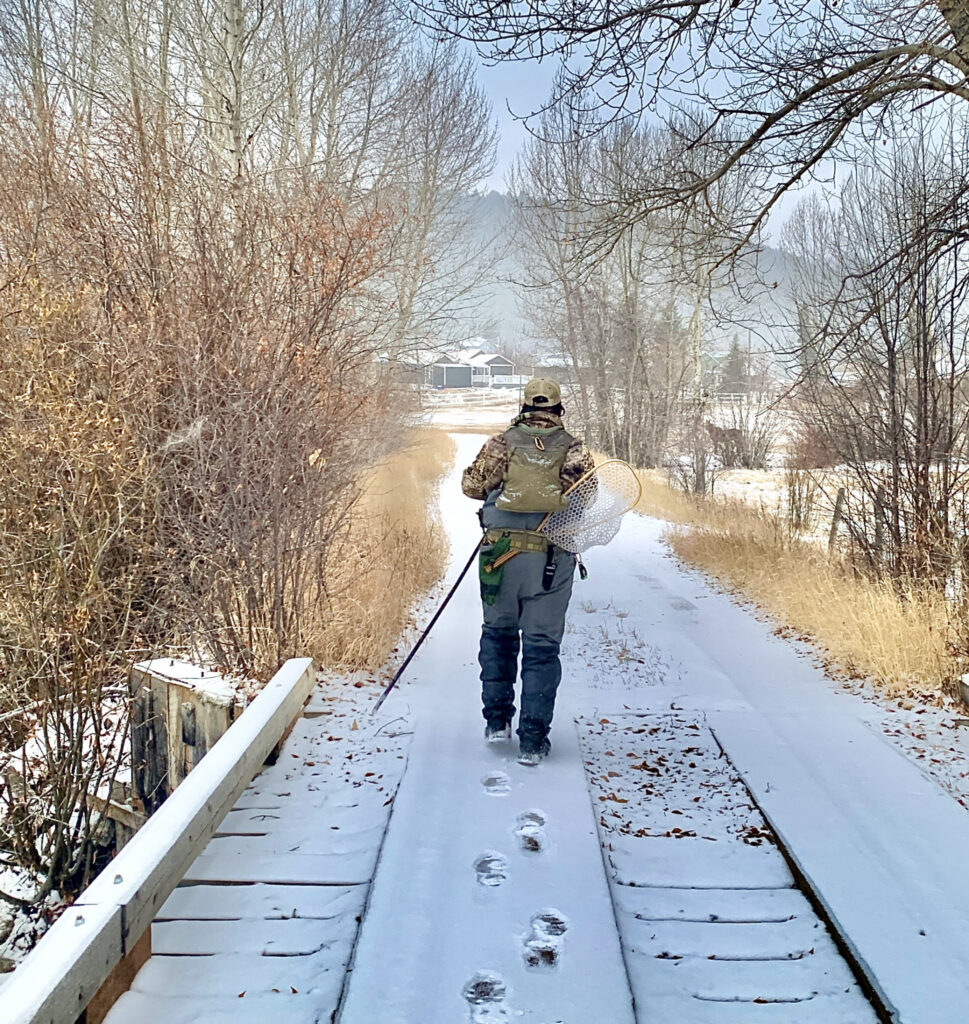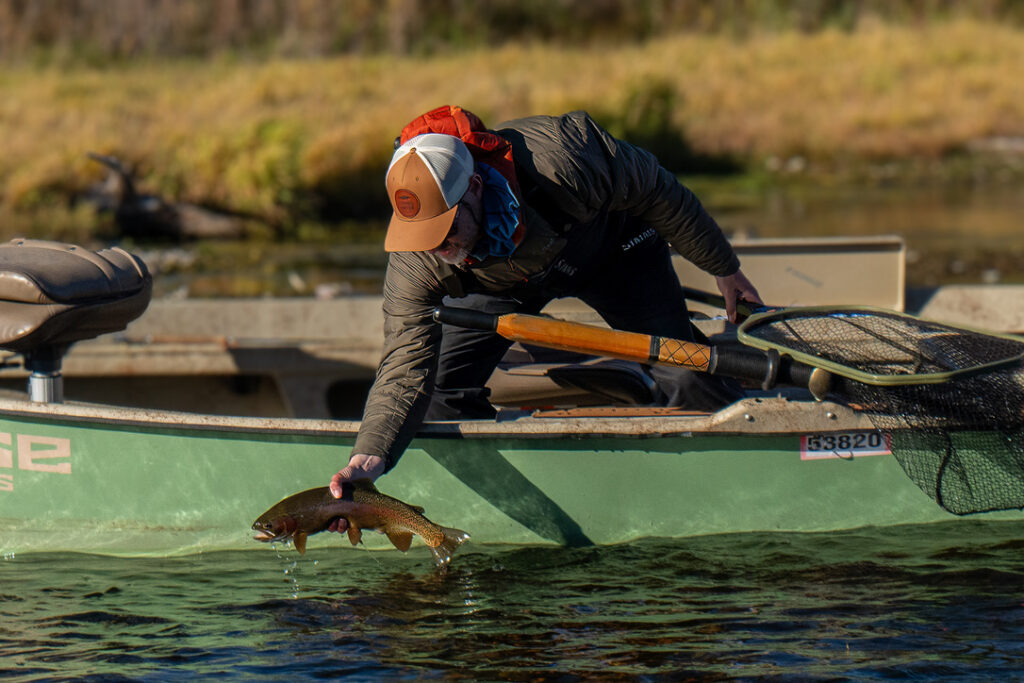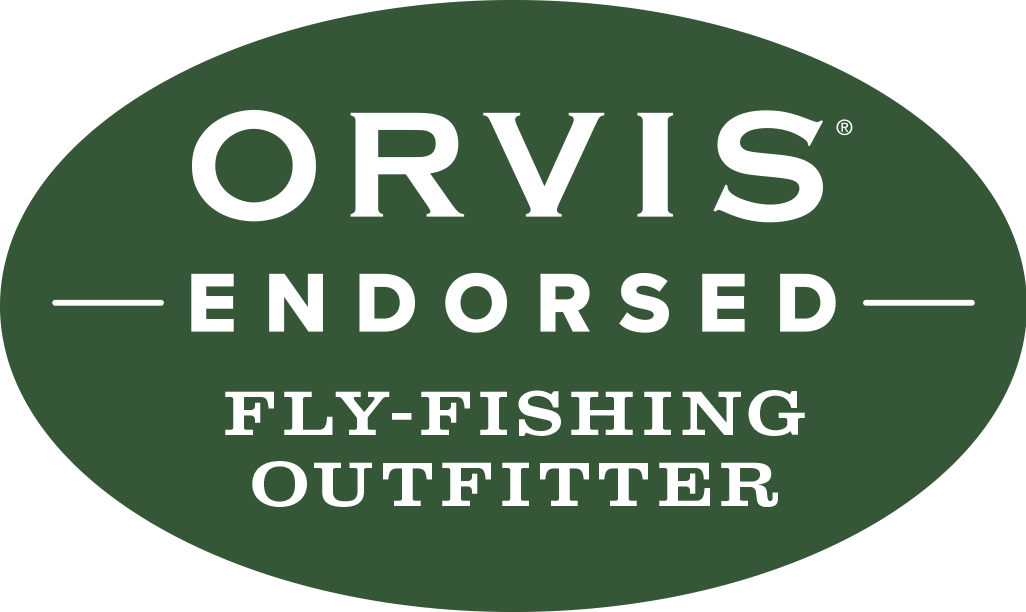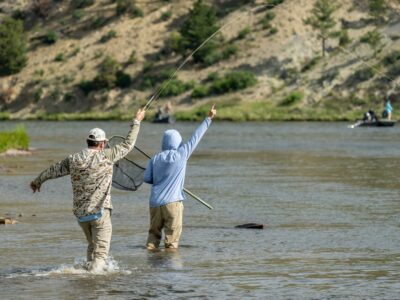Montana is world-renowned for its breathtaking scenery, vast wilderness, and legendary fly fishing. With crystal-clear rivers and streams flowing through rugged landscapes, the state has become a top destination for anglers from around the globe. When it comes to fly fishing in Montana, two of the most popular approaches are wade fishing and drift boat fishing. Each method offers its own unique advantages and experiences. Let’s take a closer look at the differences, benefits, and what to expect when choosing between float and wade fishing Montana’s wild rivers.
The Advantages (and Challenges) of Wade Fishing in Montana
Wade fishing is one of the most rewarding and intimate ways to experience a river, and it’s especially popular on many rivers in Montana. Unlike fishing from a drift boat, wading gives anglers a higher level of control and precision on the water.
Why Wade Fishing is Effective
One of the biggest advantages of wade fishing is control. By positioning yourself exactly where you want in a river or stream, you can make more targeted presentations to rising trout or pockets of holding fish. This precision often translates into more effective fishing, particularly in smaller rivers and streams.
Wade fishing also opens the door to areas that drift boats can’t reach. Many rivers in Montana have shallow riffles, side channels, or narrow seams that are inaccessible by boat. By slipping into the water with waders, anglers can explore these less-pressured sections and find fish that others miss.
A More Engaging Experience
Another benefit of wade fishing is the physical aspect. Standing in moving water and making consistent casts is more active and immersive than sitting in a drift boat. For many anglers, the simple act of walking the riverbank or wading across gravel bars is part of the experience. It keeps you engaged, moving, and connected to the river.
Drawbacks of Wade Fishing
Of course, wade fishing isn’t without its challenges. Covering large stretches of water is more difficult on foot than by boat, making it harder to locate fish when trout are spread out. In addition, wading requires physical effort and balance—slippery rocks, uneven bottoms, and swift currents can be tricky to navigate.
Safety is critical when wade fishing Montana rivers. Always check flows before stepping in, and never underestimate the power of current. A quality pair of wading boots with good traction, and a sturdy wading staff, are essential tools for both safety and success.

Float Fishing from a Drift Boat in Montana.
Drive through any trout town like Craig, Wolf Creek, Ennis, or Livingston—and you’ll notice drift boats lined up on trailers, ready for the next float trip.
A drift boat is designed to provide a safe, stable, and comfortable fishing platform. Typically, two anglers can fish at the same time while the oarsman, usually your fishing guide navigates the river. The guide controls the drift, positions the boat, and ensures everyone’s safety, allowing anglers to focus on casting, mending, and fighting fish.
Whether you’re floating the Missouri River, Clark Fork, Yellowstone, or another classic Montana waterway, drift boats make it possible to cover miles of river efficiently while accessing water that’s tough to reach on foot. For anglers looking to maximize their time,comfort and opportunities, float fishing from a drift boat is the ultimate Montana fly fishing experience.

Float and Wade Fishing Montana are both very effective. If I had to pick i’d choose BOTH!


 What to Pack for a Guided Fishing Trip in Montana
What to Pack for a Guided Fishing Trip in Montana
Leave a Reply